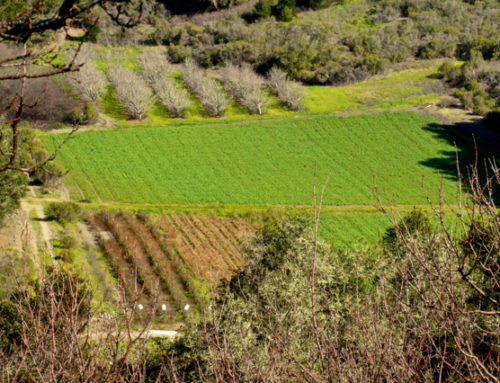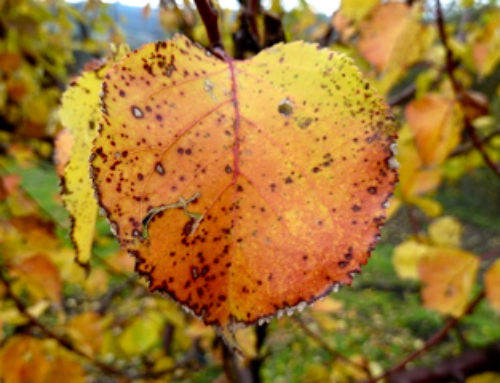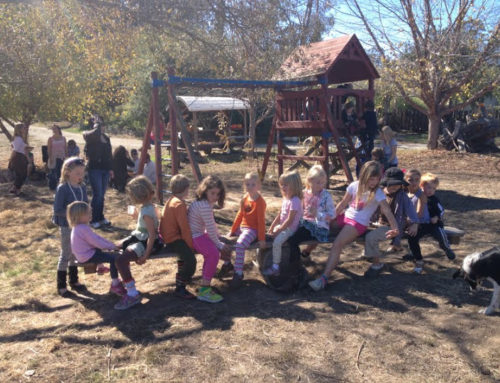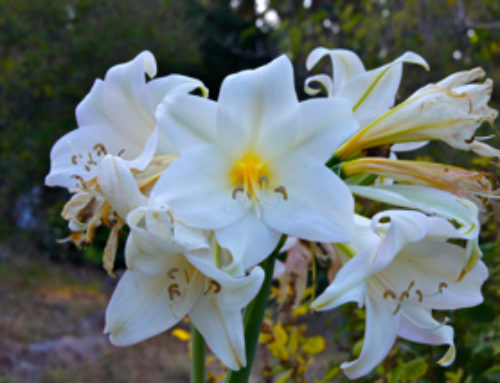One of my favorite things to do during the winter months is pruning our apple orchards. Last season I wrote how pruning is like having a conversation of sorts. Well, as with all relationships the conversation always continues, especially with the young, not fully developed trees. As I mentioned last time, I only get one opportunity at pruning every year, and with every tree one needs to take a short pause to understand what kind of pruning cuts to make to assure it’s long-term well being and productivity. The trick is to strike a balance between the vegetative vigor of the tree – growing roots, shoots, leaves and branches – and its fruitfulness – capturing the sunlight to grow plenty of fruit.

Pieces of bamboo are used to spread the branches so they grow further apart, allowing more light to penetrate into the center of the tree.
It’s been two years since I decided to graft an entire acre, almost 300 trees of mature mid-sized Newton Pippins, to add 7 new varieties (Honey Crisp, McIntosh, Pink Ladies, Pink Pearl, Braeburn, Jonagold, Arkansas Black) to our selection of apples. It’s fascinating how quickly the new grafts have developed into small trees.

On this tree, you can see both the grafts and the pruning marks.

The trees in the near row have been pruned, while the trees in the next two rows haven’t been.
The two basic pruning cuts are called heading and thinning cuts. They can be used in different ways depending on the age and health of the tree, triggering corresponding and different growth responses. Thinning cuts are meant to remove a branch that is no longer desirable (typically because they are dead, diseased, damaged or disoriented) and heading cuts are typically made across a year old branch to help shape a tree, manage its vegetative vigor and maximize its fruiting potential.
When it comes to working with young trees not fully shaped, each one is unique and it is an art to visualize how a tree will mature. For an experienced grower it will almost be intuitive what cuts to make. I still proceed slowly, often hesitating. As is so often the case one learns best from a mentor, and I have been very lucky that some of the most experienced organic apple growers in Watsonville have taken the time to pass on some of their expertise and advise as I proceed with caution and lots of questions. The best way I learn is to walk the orchards with them, while I listen and learn to engage in this unique ongoing conversation. The longer I am pruning, I realize there is no right or wrong way but always more to learn.

The trees in this picture have not yet been pruned. There are lots of small branches and shoots visible.

While these trees have been pruned. Notice how neat and tidy they look compared to the trees in the picture above.
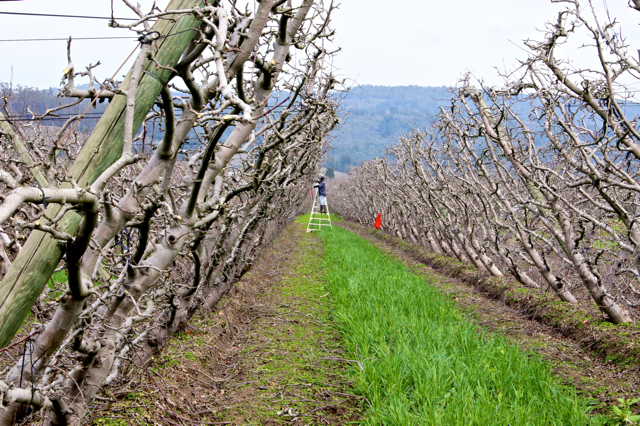
The trees pictured here are starting to take shape as the pruners go up and down the row.

